How to create maps of the US with ggplot
Ever wanted to create a map of the US with ggplot? We know that we have. For example, for our Oregon Voices project , it was invaluable to have a great package that allows to create nice charts of the US.
In this blog post, we show you how to get started with creating maps in R. And with that said, let’s dive in.
Our first map chart
We start with a simple map of the US. The cool thing is that we don’t have to do much work to make that happen. All of the heavy lifting is done for us by the usmap package. Check it out.
library(tidyverse)
library(usmap)
plot_usmap()
Whoooa, that was easy. Let’s try to do a little bit more. Maybe we want to color the states differently. That’s easily done via the fill aesthetic just like in ggplot .
plot_usmap(fill = "grey20", color = "white")
Or maybe we want to use a different granularity. Maybe we can show the data at the county level.
plot_usmap(fill = "grey20", color = "white", regions = "counties")
Adding data to the map
Interesting, there seem to be more counties in the east than in the west. Let’s see how that translates to population. Luckily, the usmap package comes with a dataset that contains the population of each county.
countypop
#> # A tibble: 3,142 × 4
#> fips abbr county pop_2015
#> <chr> <chr> <chr> <dbl>
#> 1 01001 AL Autauga County 55347
#> 2 01003 AL Baldwin County 203709
#> 3 01005 AL Barbour County 26489
#> 4 01007 AL Bibb County 22583
#> 5 01009 AL Blount County 57673
#> 6 01011 AL Bullock County 10696
#> 7 01013 AL Butler County 20154
#> 8 01015 AL Calhoun County 115620
#> 9 01017 AL Chambers County 34123
#> 10 01019 AL Cherokee County 25859
#> # ℹ 3,132 more rows
We can use that in plot_usmap() because this data set has a fips column. This one is necessary for plot_usmap() as the fips number is a unique identifier for each county. If that column isn’t present, then plot_usmap() cannot know how to map the values to counties. But we have to tell plot_usmap() to use the pop_2015 column to colorize parts of the map. We do that via the values argument.
plot_usmap(
color = "white",
linewidth = 0.1,
regions = "counties",
data = countypop,
values = "pop_2015"
)
Modifying scales
This map isn’t particularly informative since basically everything uses the same color. We can change that by using a different color scale. The usmap package allows us to use functions that we’re familiar with from ggplot2 in order to change the appearance of our maps. Here, it’s probably best to use a logarithmic color scales because there are very densely and very sparsely populated counties. But since plot_usmap() creates a ggplot, we can use the same layers from ggplot to modify the scale. In this case, we have to use scale_fill_gradient() .
plot_usmap(
color = "white",
linewidth = 0.1,
regions = "counties",
data = countypop,
values = "pop_2015"
) +
scale_fill_gradient(
trans = 'log',
high = '#0072B2',
low = 'white'
)
Ah already better. But we can do more. For example, let’s move the color bar to the top. While we’re working on the legend we might as well change its title.
plot_usmap(
color = "white",
linewidth = 0.1,
regions = "counties",
data = countypop,
values = "pop_2015"
) +
scale_fill_gradient(
trans = 'log',
high = '#0072B2',
low = 'white'
) +
theme(legend.position = 'top') +
labs(fill = 'Population (2015)')
The labels are a bit hard to read. So let’s transform them into something nice. We can use the label_number() function from the scales package to get the job done.
plot_usmap(
color = "white",
linewidth = 0.1,
regions = "counties",
data = countypop,
values = "pop_2015"
) +
scale_fill_gradient(
trans = 'log',
labels = scales::label_number(big.mark = ','),
high = '#0072B2',
low = 'white'
) +
theme(legend.position = 'top') +
labs(fill = 'Population (2015)')
Still not great. Let’s make the color bar longer in the guides() layer.
plot_usmap(
color = "white",
linewidth = 0.1,
regions = "counties",
data = countypop,
values = "pop_2015"
) +
scale_fill_gradient(
trans = 'log',
labels = scales::label_number(big.mark = ','),
high = '#0072B2',
low = 'white'
) +
theme(legend.position = 'top') +
labs(fill = 'Population (2015)') +
guides(
fill = guide_colorbar(
barwidth = unit(10, 'cm')
)
)
Finally, we can create better break points than the current ones.
plot_usmap(
color = "white",
linewidth = 0.1,
regions = "counties",
data = countypop,
values = "pop_2015"
) +
scale_fill_gradient(
trans = 'log',
labels = scales::label_number(big.mark = ','),
breaks = c(1000, 20000, 400000, 8000000),
high = '#0072B2',
low = 'white'
) +
theme(legend.position = 'top') +
labs(fill = 'Population (2015)') +
guides(
fill = guide_colorbar(
barwidth = unit(10, 'cm')
)
)
Now all that’s left to do is to increase the font size. As always, we can do that in the theme() layer. While we’re at it, let’s set the font family to something nicer.
plot_usmap(
color = "white",
linewidth = 0.1,
regions = "counties",
data = countypop,
values = "pop_2015"
) +
scale_fill_gradient(
trans = 'log',
labels = scales::label_number(big.mark = ','),
breaks = c(1000, 20000, 400000, 8000000),
high = '#0072B2',
low = 'white'
) +
theme(
text = element_text(family = 'Source Sans Pro', size = 14),
legend.position = 'top'
) +
labs(fill = 'Population (2015)') +
guides(
fill = guide_colorbar(
barwidth = unit(10, 'cm')
)
)
Conclusion
Nice, we created a map of the US. And we were able to connect a bit of data to that. (I think the map is actually quite nice to look at if I may say so myself.) With that you hopefully have a recipe for creating your own data-infused maps of the US. Have fun plotting your own maps and see you next time 👋.
Sign up for the newsletter
Get blog posts like this delivered straight to your inbox.
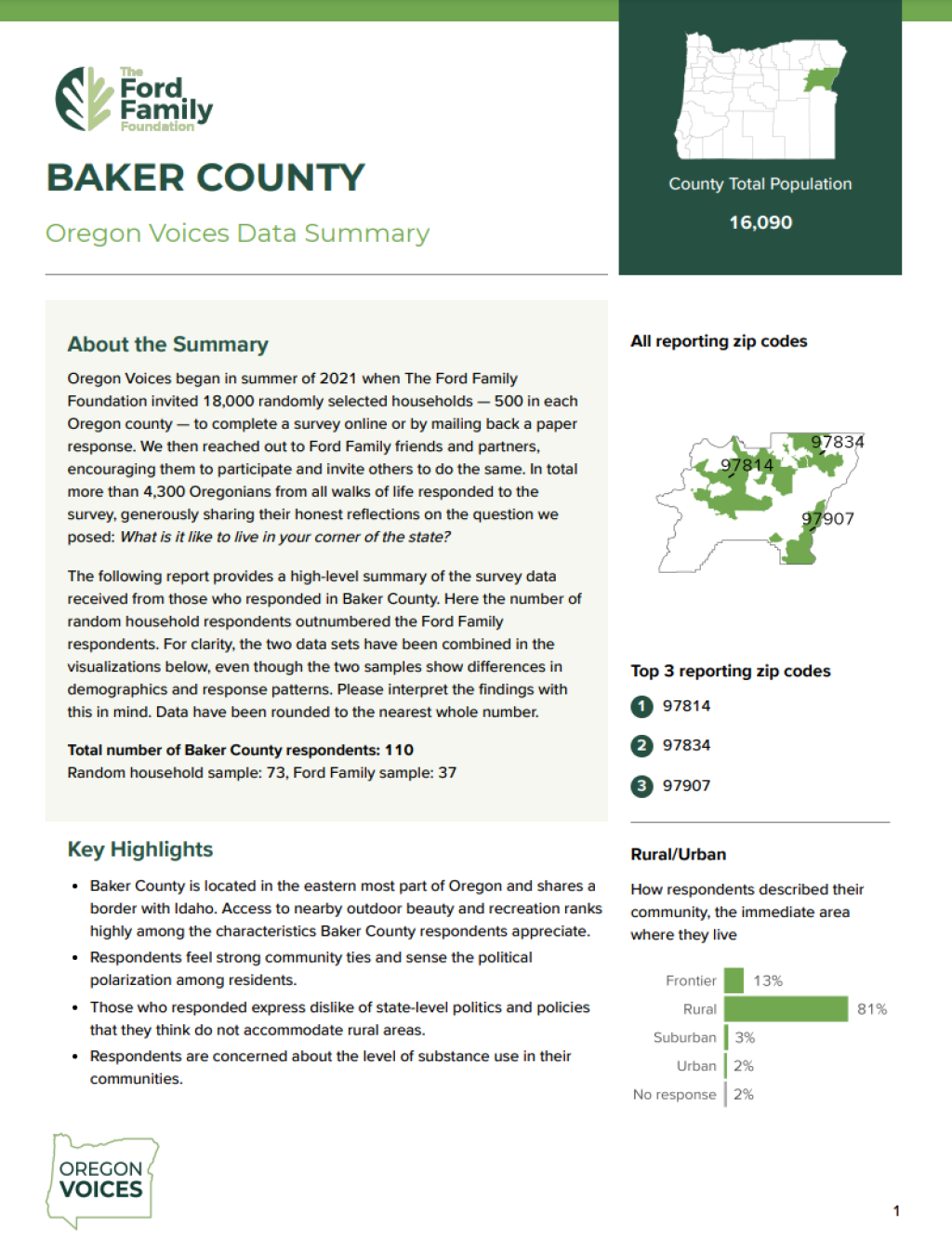
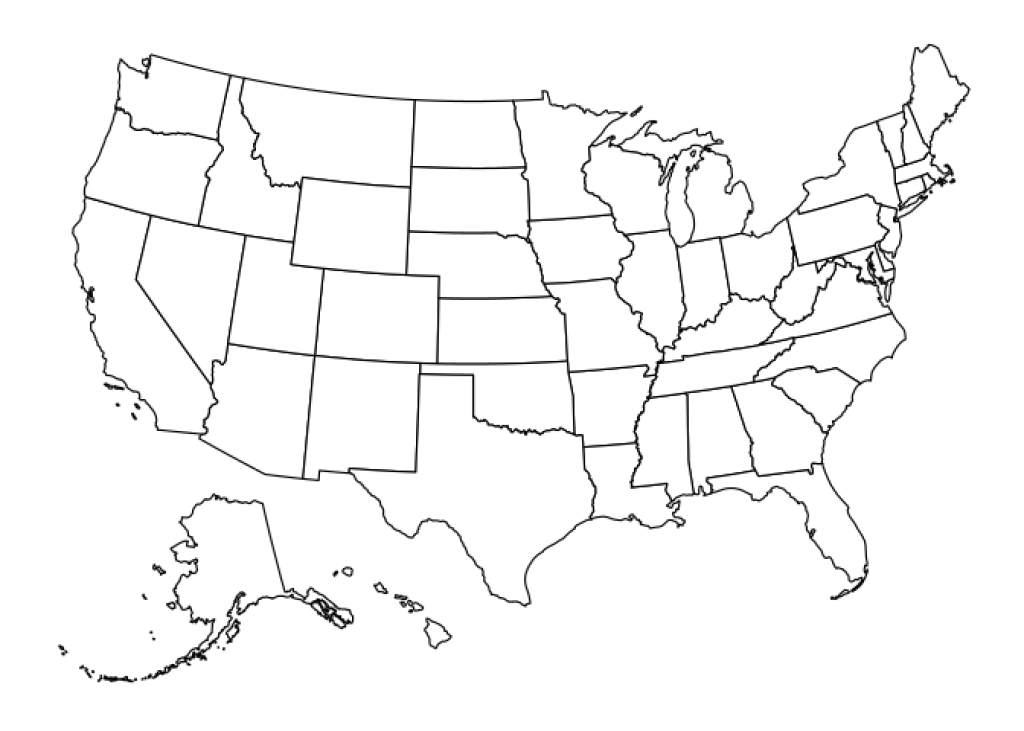

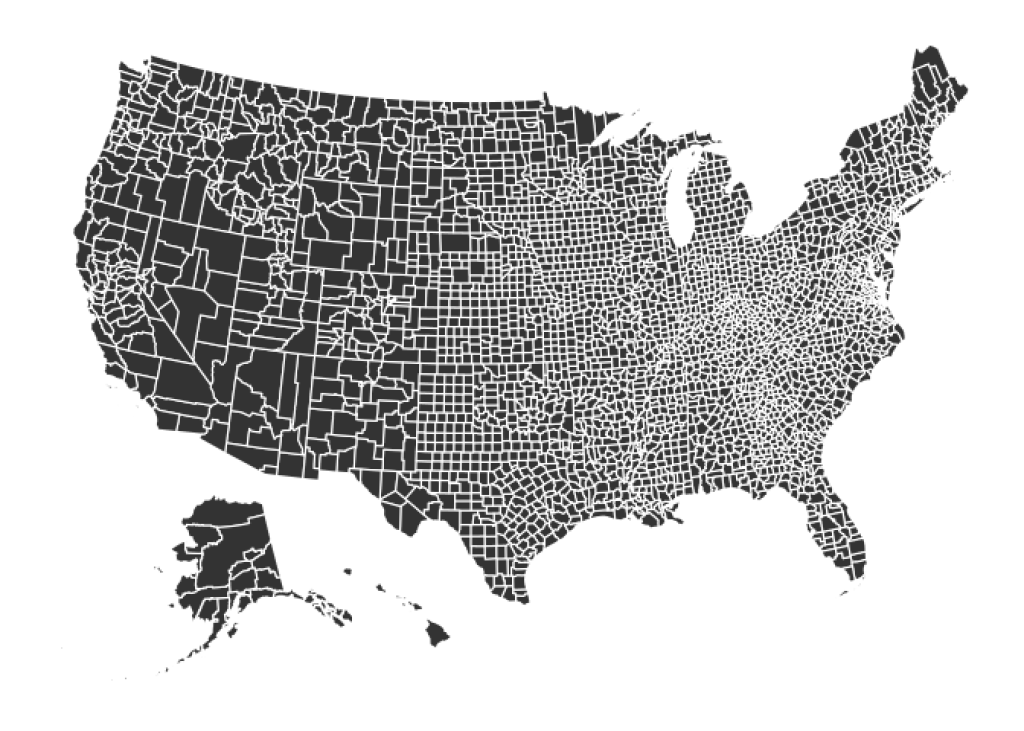

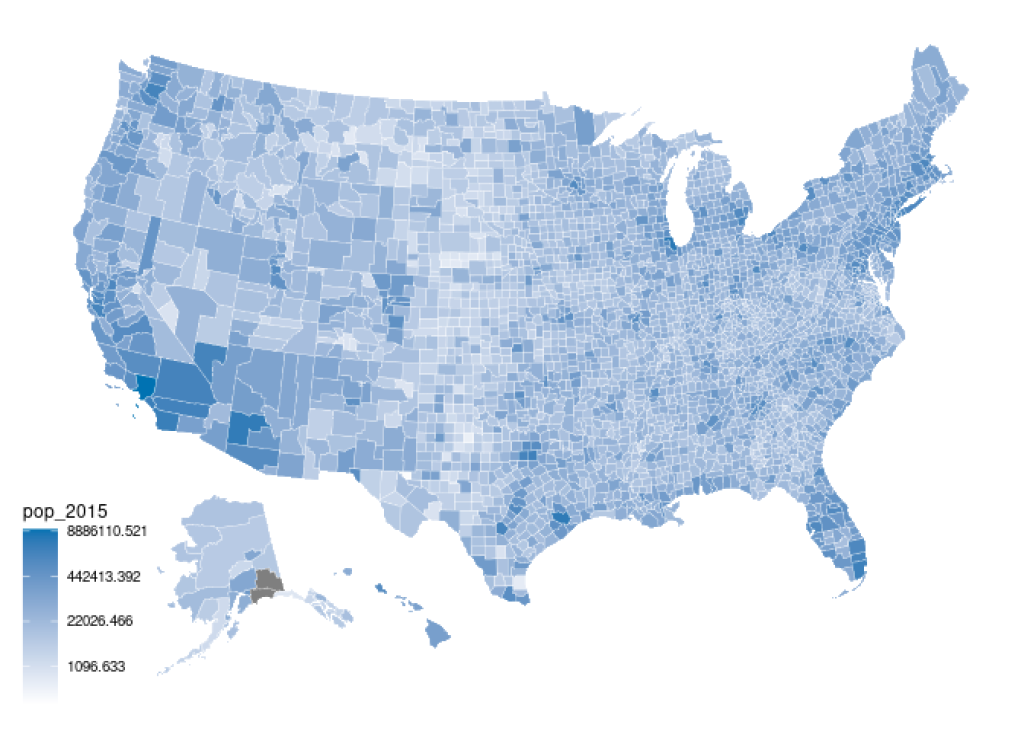
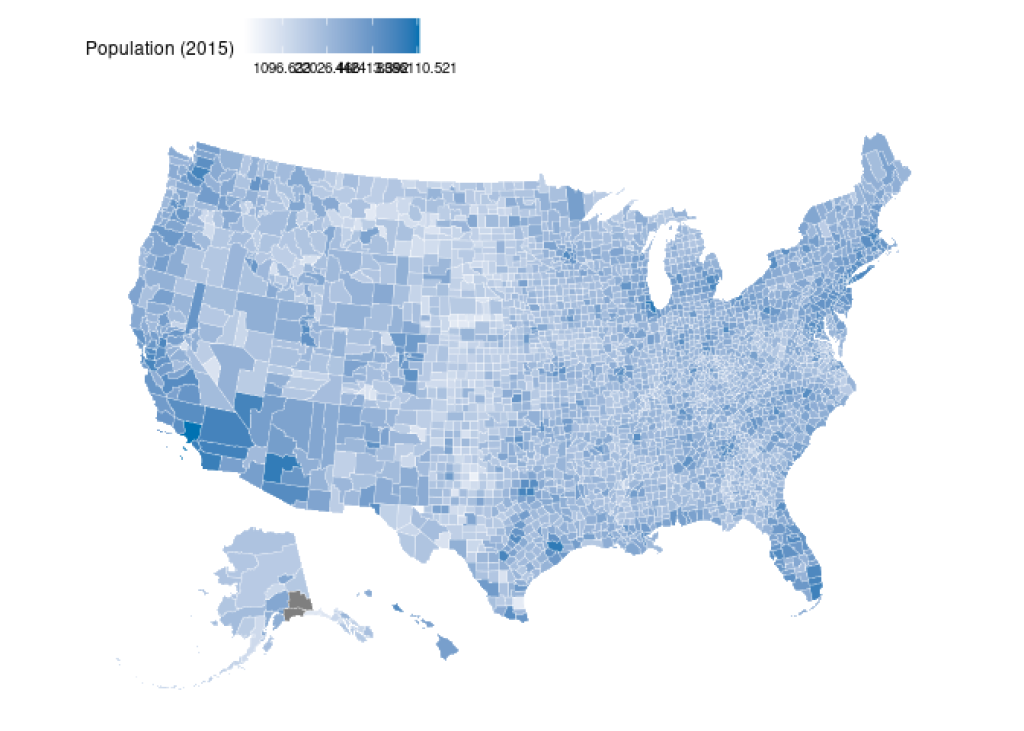

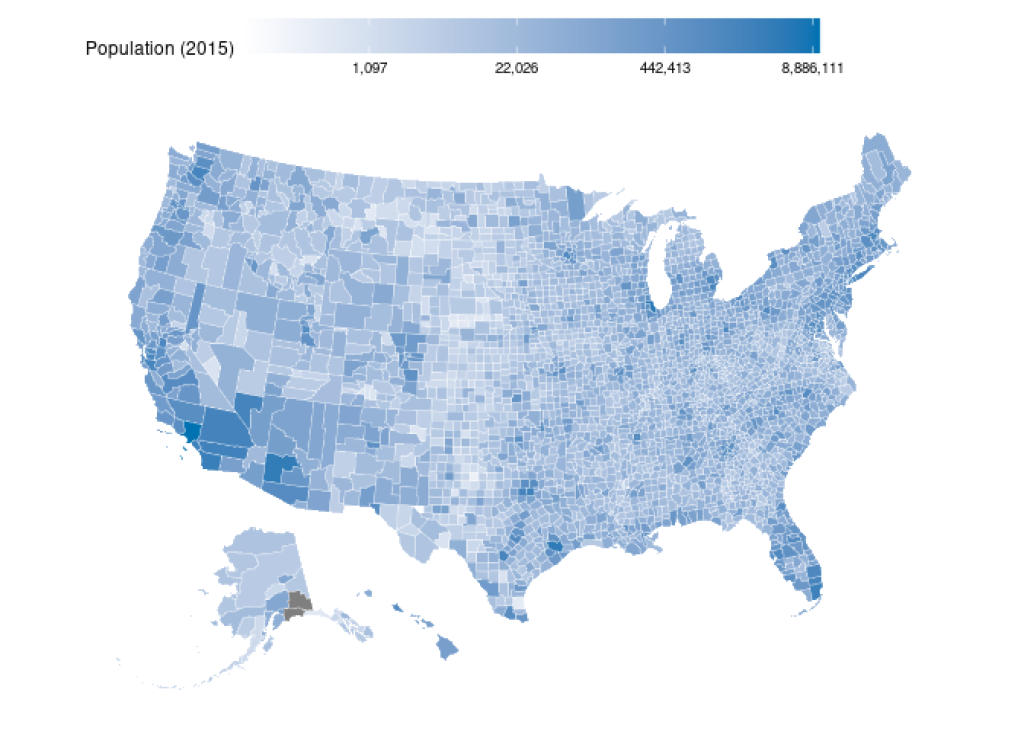
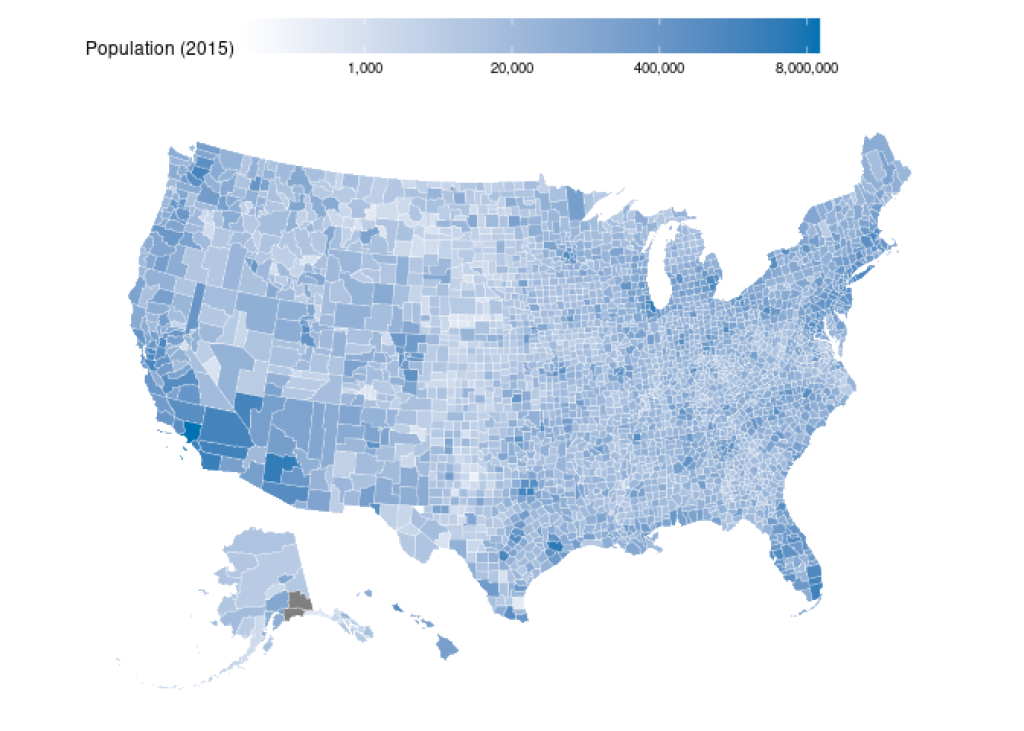

You need to be signed-in to comment on this post. Login.